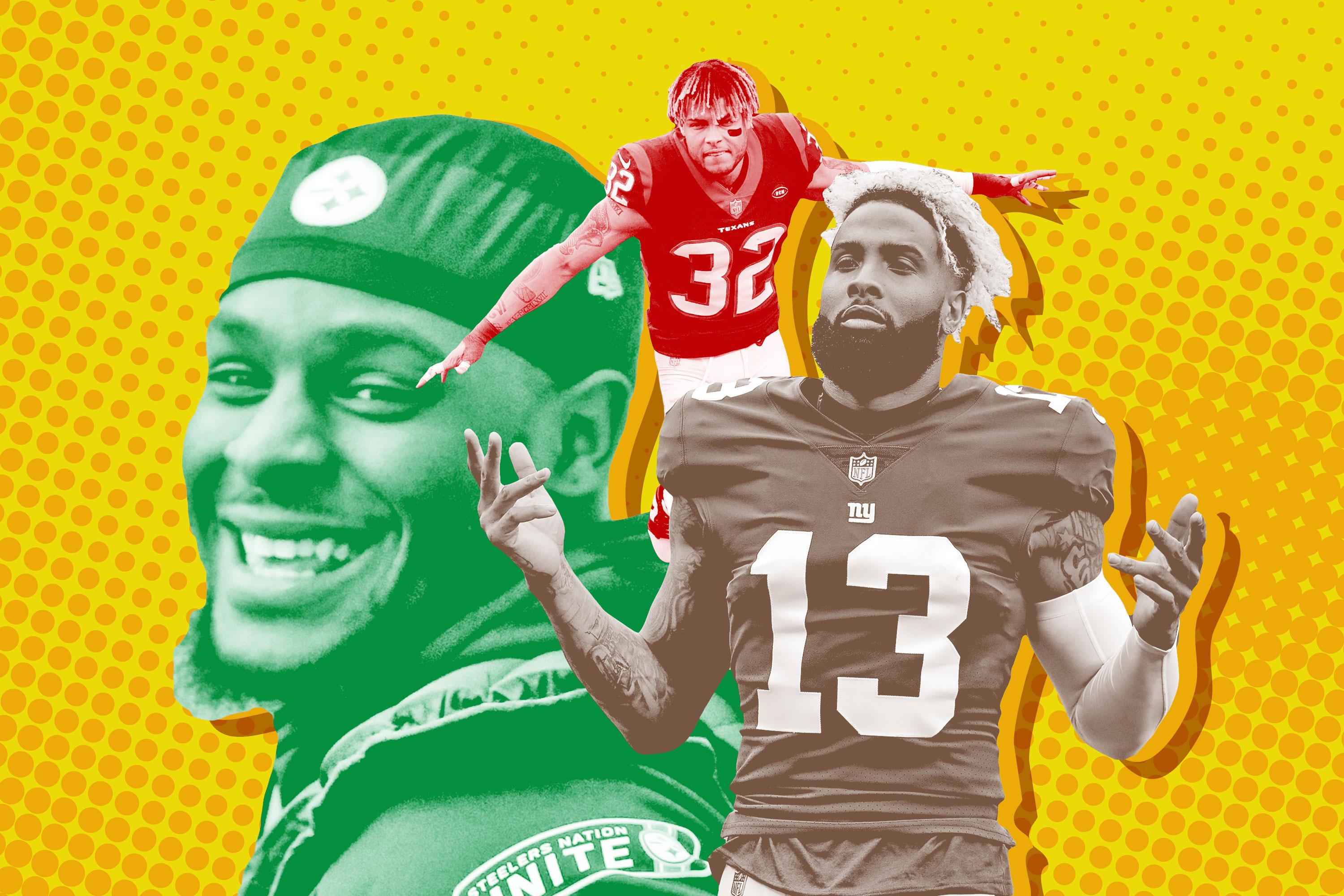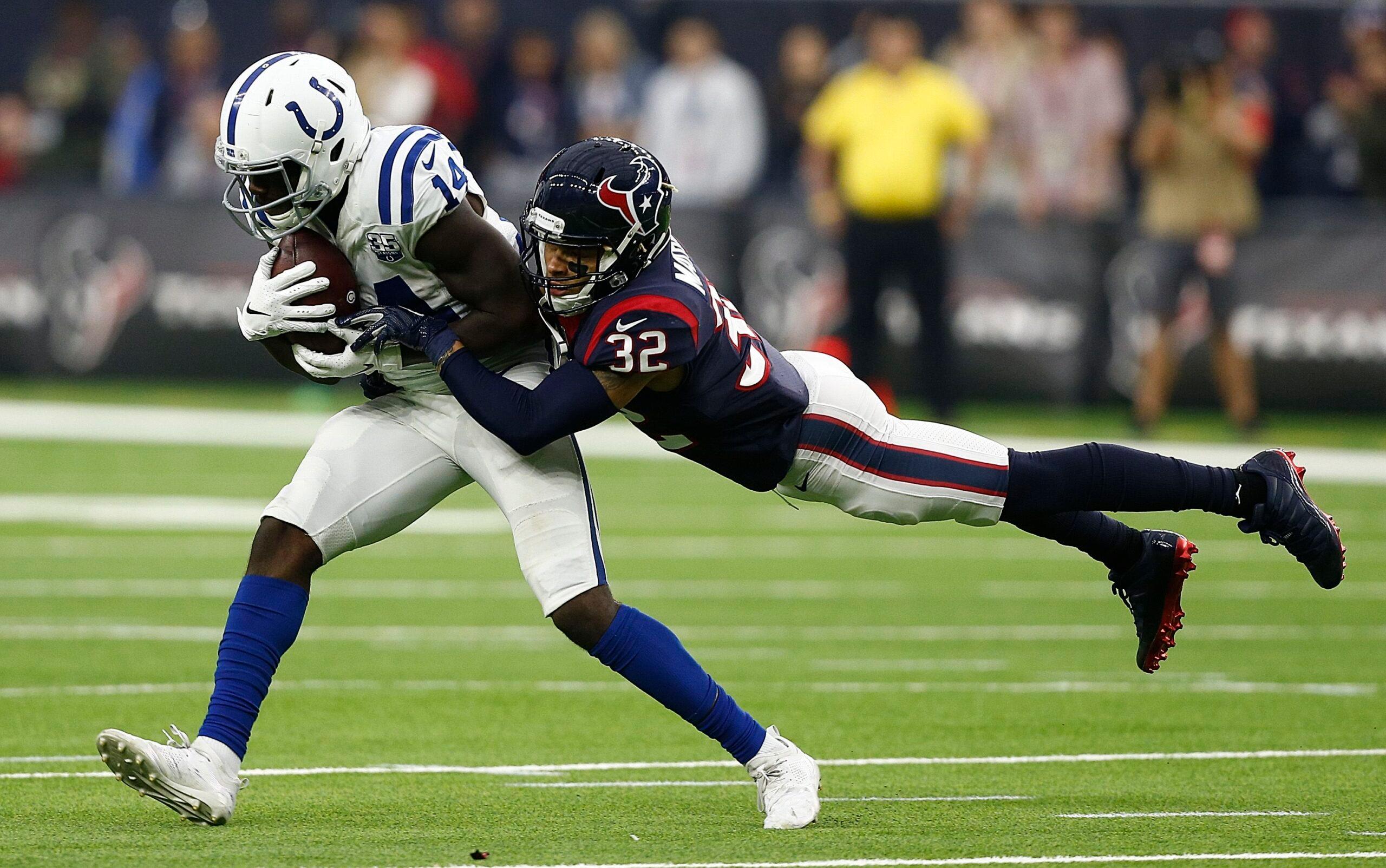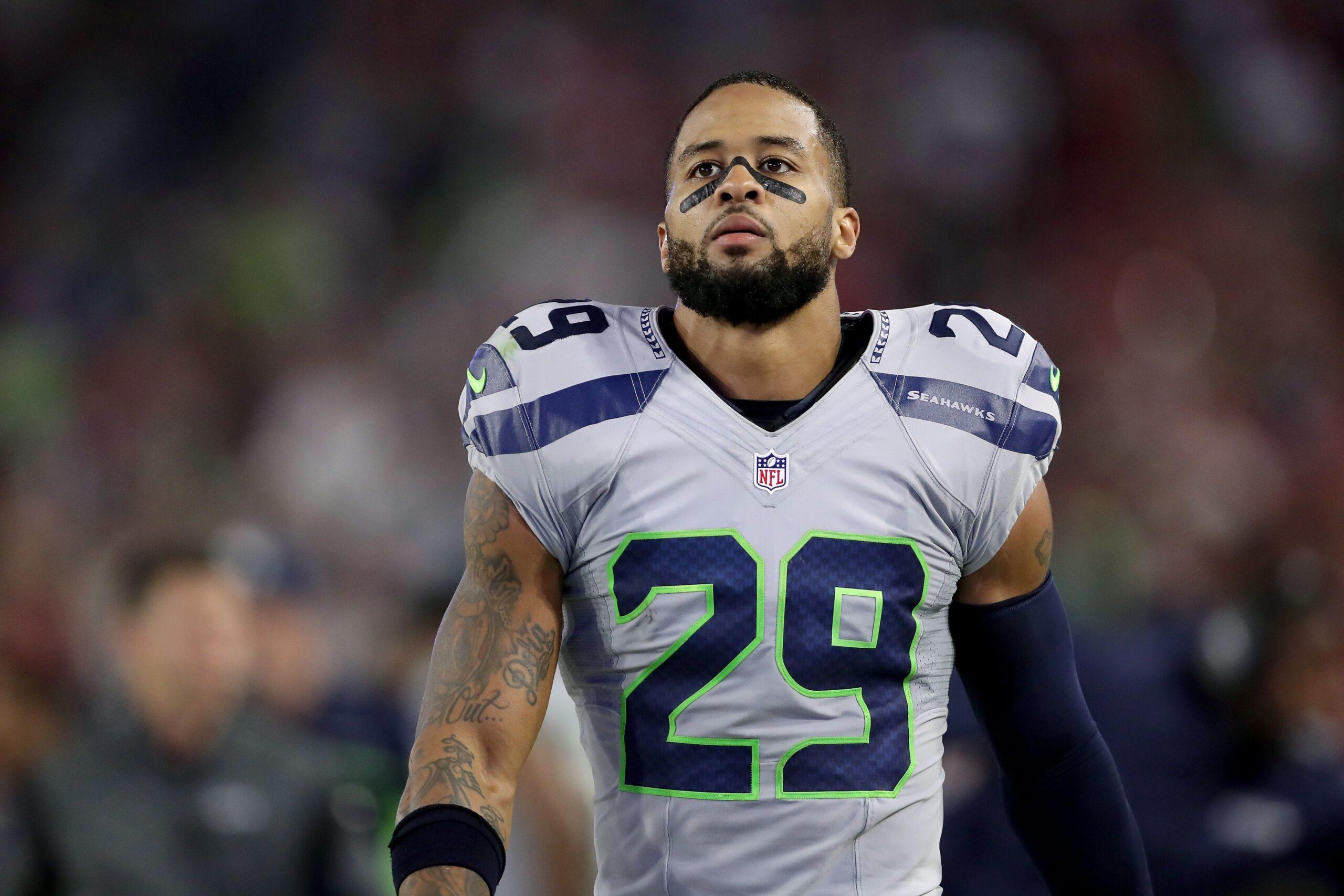
The NFL’s free-agency tampering period was a whirlwind of signings and trades—ones that may end up reshaping the league in the 2019 season. Now that many of the signings have become official following the start of the league year on Wednesday afternoon, let’s take a look at the teams that have defined the early stages of the NFL offseason.
Cleveland Browns
It’s still tough to believe this era of the Browns is real. General manager John Dorsey made the biggest splash of the offseason on Tuesday night by dealing a pair of picks and safety Jabrill Peppers to the Giants in exchange for Odell Beckham Jr. That move is the best proof yet that these aren’t your parents’ Browns, but it wasn’t the only savvy deal Cleveland has made over the past week. In trading guard Kevin Zeitler for Giants pass rusher Olivier Vernon, Dorsey has assembled what might be the best edge-rushing duo in the league with Vernon and Myles Garrett. The Browns also signed former Vikings defensive tackle Sheldon Richardson to a three-year, $39 million ($21.5 million guaranteed) deal, which makes Cleveland’s defensive line—complete with tackle Larry Ogunjobi—arguably the top pass-rushing front in the NFL.
What should really worry the rest of the AFC North, though—and the league in general—is that the Browns probably aren’t done. They still had more than $49 million in cap space after the Beckham and Vernon deals, and that gives Dorsey plenty of flexibility to keep adding pieces to his roster. The Browns still need a safety to replace Peppers and depth on both sides of the ball, but Cleveland has more than enough resources to find everything it needs.
New York Jets
The Jets have been one of the two most aggressive teams in free agency this spring (along with the Raiders), and that shouldn’t surprise anyone. General manager Mike Maccagnan came into the offseason with nearly $100 million in cap space and plenty of motivation to use it. The Jets won 14 games combined over the past three seasons. That lack of success cost former head coach Todd Bowles his job in December, and if Maccagnan can’t right the ship—and fast—he could be the next one to go.
So when the free-agency period opened up this week, Maccagnan came out swinging. He made former Ravens captain C.J. Mosley the highest-paid off-ball linebacker in the NFL with a five-year, $85 million contract that includes $51 million in guarantees. The Jets also chased former Vikings linebacker/edge rusher Anthony Barr, who initially agreed to a massive deal with the team before getting cold feet and signing an extension with Minnesota. Barr’s decision to return to the Vikings reportedly allowed the Jets to increase their offer to running back Le’Veon Bell, who eventually said yes to a four-year, $52.5 million deal with $35 million guaranteed. Even with Barr in the fold, though, the Jets seemed to be the team pushing hardest to sign the former Steelers star.
Entering the offseason, the Jets were the most likely landing spot for Bell. The organization was both flush with cash and one of the few franchises that would be inclined to overpay for a position whose value has diminished as of late. Maccagnan doesn’t have much time to turn the franchise around, and even though he had to pay a premium for Bell, it’s easy to argue that the dual-threat back was the most established player on the market and the one most likely to aid the development of second-year quarterback Sam Darnold. Maccagnan has to move Darnold along quickly, and he seems willing to spend whatever it takes.
Along with Bell and Mosley, the Jets also re-signed defensive lineman Henry Anderson, landed former Washington slot receiver Jamison Crowder, and swapped late-round picks with the Raiders for standout guard Kelechi Osemele (which might have been their best move of the offseason so far). Every piece of the Jets’ franchise trajectory pointed to them being a major player in the market this spring, and that’s precisely what’s happened.
Oakland Raiders

Jon Gruden and Mike Mayock’s clock may not be ticking the same way that Maccagnan’s is, but the Raiders seem to be throwing caution to the wind anyway. This weekend, Oakland dealt third- and fifth-round picks to the Steelers in exchange for all-world receiver Antonio Brown (the team also gave Brown a new contract worth more than $50 million over the first three years with just over $30 million guaranteed). With a move to Las Vegas looming in 2020, the Raiders have a reason to push for relevance now—and their approach to free agency was that of a team trying to win immediately.
After dealing for Brown, Oakland gave out massive contracts to left tackle Trent Brown (four years, $66 million with $36.3 million guaranteed), safety Lamarcus Joyner (four years, $42 million with $21.3 million guaranteed), and wide receiver Tyrell Williams (four years, $44 million with $22 million guaranteed). That’s the sort of haul a fan might cook up on Twitter, but it’s a much more ambitious plan than we usually see from teams in free agency. Gruden and Mayock went out and paid the sticker price for three of the top players on the market and gave plenty of new money to Brown after pulling off the trade.
It hasn’t always been easy to figure out what the Raiders’ team-building plan will be in the Gruden era. Oakland traded Khalil Mack and Amari Cooper last year because the team didn’t want to pay either top dollar in free agency—and then spent a small fortune on the open market anyway. Trent Brown also plays the same position as Kolton Miller, whom the Raiders drafted in the first round last year. Oakland could choose to keep Miller at left tackle, but that would mean that Brown would be making more money than any left tackle in the league to play a less valuable position.
With Antonio Brown, Williams, and Trent Brown, Oakland’s offense is undeniably more talented than it was in 2018, and with two additional first-round picks (acquired in the deals for Mack and Cooper), the Raiders have an absurd amount of draft capital this year. But so far, there doesn’t seem to be any unifying theory to the moves Oakland has made in the first 18 months of Gruden’s tenure.
Indianapolis Colts
Armed with more than $101 million in salary cap space at the start of free agency, the Colts were expected to throw some money around this week. But so far, GM Chris Ballard has been content to mostly stand pat while other teams engage in the feeding frenzy.
Indy’s only significant moves have been signing former Panthers receiver Devin Funchess to a one-year, $13 million deal and re-signing cornerback Pierre Desir to a three-year, $21 million deal with $12 million guaranteed. Desir had a career year in coordinator Matt Eberflus’s defense, and he should be a valuable piece for Indy’s defense on such a modest deal. But with more cap space remaining (presumably more than $80 million) than any other team in the league, it’s easy to wonder what the Colts are waiting for.
The answer is value. Many of the biggest free-agent names at the team’s positions of need are off the board (Landon Collins at safety and Trey Flowers at edge rusher, among others), but there are still plenty of quality players available. As of this writing, the Colts could still finish with a free-agency haul of pass rusher Justin Houston, linebacker K.J. Wright, wide receiver Golden Tate, and safety Tre Boston. No one could possibly look at that group and be disappointed. Ballard may have missed out on the big fish, but finding bargain deals during the second wave of free agency can make all the difference when the season begins.
Kansas City Chiefs
Chiefs GM Brett Veach and his front office are responsible for three of the most shocking moves of the week. First, Kansas City signed safety Tyrann Mathieu to a three-year, $42 million deal that ties him for the highest average annual value at the position. Adding Mathieu makes sense, considering the Chiefs fielded an abysmal defense in 2018 (they finished 26th in Football Outsiders’ defensive DVOA) and came into the offseason desperate for secondary help. But with so much money allocated to Mathieu, Kansas City decided to release fellow safety Eric Berry, who was set to count for $16.5 million against the salary cap in 2019. Berry has been a pillar of the Chiefs defense for years, but between the Mathieu signing and growing concerns about Berry’s availability (he played just three games over the past two seasons), the team couldn’t justify spending close to $30 million on safeties this season.

The more surprising move, though, was the decision to trade pass rusher Dee Ford to the 49ers in exchange for a second-round pick. After releasing franchise mainstay Justin Houston earlier in the offseason, the Chiefs will now be without their two starting edge rushers from 2018. Together, those moves signal what might be an organizational shift on defense. The Chiefs’ season came to an end against a Patriots team that had a loaded secondary and utilized scheme over talent in the pass rush. Letting go of both Ford and Houston comes with plenty of risk, but Kansas City clearly thinks that using cheaper options up front (plus relying more on interior rushing from Chris Jones) and putting that extra money into the secondary is the smart way to spend.
Baltimore Ravens
In the early stages of the tampering period, the Ravens defense seemed to be on the verge of collapse. Baltimore released Eric Weddle, then allowed Terrell Suggs, Za’Darius Smith, and C.J. Mosley to all hit free agency. That’s a hell of a lot of talent to lose in a single offseason, but when it comes to the Ravens’ ability to maintain their excellent defense, we should know better by now. Out of nowhere, Baltimore swooped in and signed former Seahawks safety Earl Thomas to a four-year, $55 million deal that includes $32 million fully guaranteed at signing.
Similar to the Chiefs, the Ravens decided to offset the loss of their two best pass rushers by adding an elite safety. The difference, though, is that while Kansas City still has to remake most of its secondary, Thomas is the final piece of the Ravens’ loaded defensive back group. It’s not easy to cut Eric Weddle and then upgrade at safety, but the Ravens managed to do it. Baltimore’s secondary now features the best free safety in the NFL (when healthy), strong safety Tony Jefferson, an outside cornerback duo of Marlon Humphrey and Jimmy Smith, and slot man Tavon Young (who signed a sizable extension earlier this offseason). The Ravens also have veteran Brandon Carr, who can step in if either of their outside corners goes down with an injury. That’s the most complete defensive back group in the league. Baltimore will likely be looking for some pass-rushing help in the draft, but with so many talented edge players coming out, this is the year to find it.

Thomas is the crown jewel of the Ravens’ offseason haul, but they also signed former Saints running back Mark Ingram on Wednesday. Baltimore proved last season that its unconventional offense could get production out of unheralded backs—and Ingram is a known commodity who has been one of the most effective downhill runners in the NFL for some time. Considering some of the recent running back deals that have been handed out in free agency, the three-year, $15 million contract Baltimore gave Ingram is more than reasonable for a team that’s going to rely more on their running game than any team in football next season.
Green Bay Packers
It’s a new era in Green Bay. For years, the Packers were one of the most reluctant teams in the NFL when it came to free agency. Their forays into the market typically returned players who’d been released by their former teams, which ensured that Green Bay’s compensatory pick formula wouldn’t be affected. Well, those days appear to be over. The Packers signed not one, not two, but three high-profile free agents this week, and they’ve reshaped their defense in the process.
Green Bay’s biggest priority this offseason was upgrading its pass rush. With franchise stalwart Clay Matthews hitting free agency and fellow edge rusher Nick Perry expected to be released, the Packers had two starting edge-rusher spots to fill—and they filled those with two of the top options on the market. Second-year GM Brian Gutekunst gave former Ravens pass rusher Za’Darius Smith a four-year, $66 million deal with $20 million guaranteed. That’s a monster payday for a player who’s never played more than 741 snaps in a season, but Smith’s per-snap numbers were fantastic in 2018. He finished with the same pass-rush productivity figure (Pro Football Focus’s measure of disrupted dropbacks per snap) as Jacksonville star Yannick Ngakoue and ahead of stars such as Michael Bennett, J.J. Watt, and Myles Garrett. There’s always some risk in expecting part-time players to be productive in larger roles, but Smith has shown an ability to get after the quarterback from several different spots along the front four. And Gutekunst wasn’t done there. Not long after Smith agreed to his deal, former Washington linebacker Preston Smith also signed a four-year contract worth $52 million (with $16 million guaranteed). Both are risky deals for players who haven’t produced much by way of sacks in their careers, but their respective hits and hurries numbers indicate that their best seasons may be ahead of them.
To go along with their new front attack, the Packers also signed former Bears safety Adrian Amos to a four-year, $36 million deal (with $12 million guaranteed). Considering the market-setting deals that players like Landon Collins and Tyrann Mathieu received this week, snagging Amos for just $9 million per year, with minimal guarantees, is a steal for Green Bay. It might be the best value any team found early in free agency.
Green Bay’s uncharacteristic aggressiveness had its missteps (in the form of a four-year, $28 million deal for also-ran guard Billy Turner), but the Packers’ attempts to add outside talent indicate that the team is willing to do all it can to maximize the final years of Aaron Rodgers’s career. Very few value deals are found in the first couple of days of free agency, but for a franchise that spent years being too cautious in the market, this could be a welcome change.
Buffalo Bills
Bills GM Brandon Beane may not have made any headline-grabbing deals in free agency, but collectively, Buffalo has used its abundance of cap space in fascinating ways. The team gave former Chiefs center Mitch Morse a market-setting, four-year deal worth $44.5 million with $26.2 million guaranteed. That may seem like an overpay, but after Eric Wood was forced to abruptly retire ahead of last season because of a serious neck injury, the Bills were in a tough spot at a crucial position. Morse had his share of promising moments in Kansas City, despite a rash of injuries, and the Bills are betting on his ability to regain his form on a premium contract.
Buffalo spent big on Morse, but the team’s other moves along the offensive line have been much more frugal and creative. Aside from left tackle, where 2017 second-round pick Dion Dawkins is penciled in as the starter, the Bills had openings at every other line spot. Center is now occupied by Morse, but to fill the rest, Beane has tried to find viable bargain-bin options. Former Jets center Spencer Long signed a three-year deal worth $12.6 million (with only $1.2 million guaranteed); former Raiders backup guard Jon Feliciano inked a two-year, $8 million deal; and former Washington swing tackle Ty Nsekhe agreed to a two-year, $14.5 million contract. Among those guys, Nsekhe is the most promising starting option, but Beane’s approach of signing talent on the cheap with the hopes that he can fill a few starting spots is an enviable strategy as other teams shell out top-of-the-market money for solid players.
Elsewhere on the offense, Buffalo gave speedy receiver John Brown a three-year, $27 million deal (with $11.7 million guaranteed) and slot man Cole Beasley a four-year deal for $29 million (with $14.4 million in guarantees). Brown’s ability as an outside-the-numbers deep threat seems to fit well with second-year starter Josh Allen’s strong arm and willingness to push the ball down the field, and Beasley gives Buffalo an over-the-middle option that the team lacked last season. Allen struggled in his rookie year as a short to intermediate passer, but Beane’s attempts to build a receiving corps with varied skill sets is the right idea. The Bills didn’t give their highly drafted rookie quarterback much chance to succeed last season, but in Year 2, they’re providing Allen with a much better infrastructure—and they aren’t breaking the bank to do it.